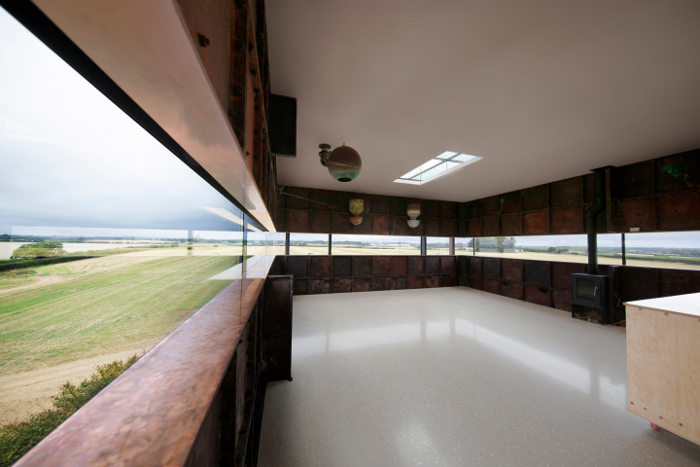There are rumblings that Instagram isn’t working for architects like it once did. Dave Sharp, Director of Vanity Projects, built his reputation advising small practices in Australia and the UK on digital marketing.
He will share his insight on fast acting and longer term marketing strategies at the RIBA Guerrilla Tactics conference from 8 to 10 November, where he will be speaking on Marketing Tactics for Small Practices.
Sharp says the days of becoming an instant design celebrity via Instagram, the profession’s favourite social media platform, are long gone.
Change to Instagram’s algorithm makes it harder to reach followers
"You’ve still got to be on Instagram, but you cannot expect to be 'discovered' anymore. It’s not going to do the heavy lifting for you in marketing terms. The trend now is to try to get your work featured on more traditional (but now digital) design publications once again such as dezeen, RIBA Journal, and The Architects' Journal, or curated real estate publications from the likes of Modern House."
Sharp still recommends LinkedIn as a strong platform for business-to-business communities networking, access to professional consultants and clients, and evidencing thought leadership.
But the marketing tool that really gets him enthusiastic these days is the email newsletter. He recommends a regular practice newsletter as the backbone of his clients' marketing strategies and is on a mission to convince his clients of their benefit.
"I now regard newsletters as the number one marketing opportunity for architects. They give people the chance to get to know your work, they stimulate referrals, and practices can use their newsletter planning schedule as the motivator to write and generate content."
Sharp’s enthusiasm for email newsletters has increased in recent years as changes to Instagram’s algorithm have made it much harder for practices to reach their followers. Instagram posts are often seen by less than 10% of a practice’s followers, and engagement rates can easily fall below 2%.
By comparison, email newsletters will typically be opened by 40-50% of your subscribers, and 10-20% will click on the content and links within.

Email newsletters are a key marketing opportunity for practices
Sharp’s free webinar Email Marketing for Architects takes practices from the basics of the first newsletter through to more sophisticated strategies such as automated sequencing of recycled content for new subscribers.
He recommends starting with a monthly newsletter. Practices should plan their content typically three to six months in advance, with upcoming content assigned dedicated slots in future emails. This helps drive the practice’s wider content generation strategy.
Each newsletter should lead with a headline story, supported by a series of secondary items. This could be a major project milestone or specially prepared content such as a blog post or a video. Secondary items can include tips for clients, industry awards, advice, project updates, staff announcements, and so on.
The mechanics are straightforward. Sharp will almost always recommend Mailchimp for the email client, which has an easy page builder interface and can perform a wide range of customisable tasks. If pages are built in MS Word or Google Docs they can be dropped straight into Mailchimp, and once the layout has been designed it can be used time and again.
Practices can opt for more tailored layouts that reflect their branding through a choice of colours and fonts, or more basic layouts reminiscent of regular emails.
Sharp says it has been shown that simpler email-looking newsletters actually get more clicks and are more likely to get viewers engaged.
"Simple, uncluttered newsletters may not look as attractive but they get better results. They can also look more personal and less like marketing material. So while every email should contain attractive images, it’s best to avoid overcomplicating your newsletter template with buttons, dividers, and headings."

Build a targeted mailing list
The next task is building the mailing list. Sharp advises against mass emailing. In his view, practices should only be engaging recipients who they know are likely to want to see their emails.
This includes past clients – these should always be included - current and prospective clients, staff past and present, builders and other consultants you’ve worked with previously, and finally, enquiries received on email and through your website.
Import the list into Mailchimp and sign up for a paid plan, do a test run to yourself to check everything works and looks good, and then you are off.
Sharp always recommends practices take appropriate steps to make sure emails are only sent to subscribers who want to receive them. He advises that the first email should simply explain the purpose behind the email, why the recipient has been added to the mailing list, and a message encouraging them to unsubscribe if they no longer wish to receive content from the practice.
Subscribers who never open emails should also be scrubbed from the list after the first few emails are sent, and there should be an opt-out in every email, says Sharp.
Use sign-up forms on your website to grow your mailing list
The content prepared for a practice’s newsletter can have multiple lives and be put to good use on your social media platforms such as Instagram and LinkedIn and, of course, your website.
Practices can set up automated email sequences sent to new contacts using the best of past newsletters. Such routines can appear like a sequence of personal communications and be readily automated in Mailchimp.
Embedded sign-up forms on your website are an excellent way to grow your mailing list over time. Practices can get creative: offer an info pack, a floorplan of a featured project, the option to receive further information on a particular topic, a “How to do…” lesson, or another perk of potential interest to your audience.
Sharp says one of the great things about digital newsletters, compared to social media platforms, is that the practice knows their intended audience will receive it without having to contend with a social media algorithm.
Much valuable content is simply lost on social media platforms, whereas with newsletters you always know exactly where the information is going and that, for the most part, it is being received with interest.
Thanks to Dave Sharp, Director, Vanity Projects.
Text by Neal Morris. This is a Professional Feature edited by the RIBA Practice team. Send us your feedback and ideas.
RIBA Core Curriculum topic: Business, clients and services.
As part of the flexible RIBA CPD programme, professional features count as microlearning. See further information on the updated RIBA CPD core curriculum and on fulfilling your CPD requirements as an RIBA Chartered Member.









